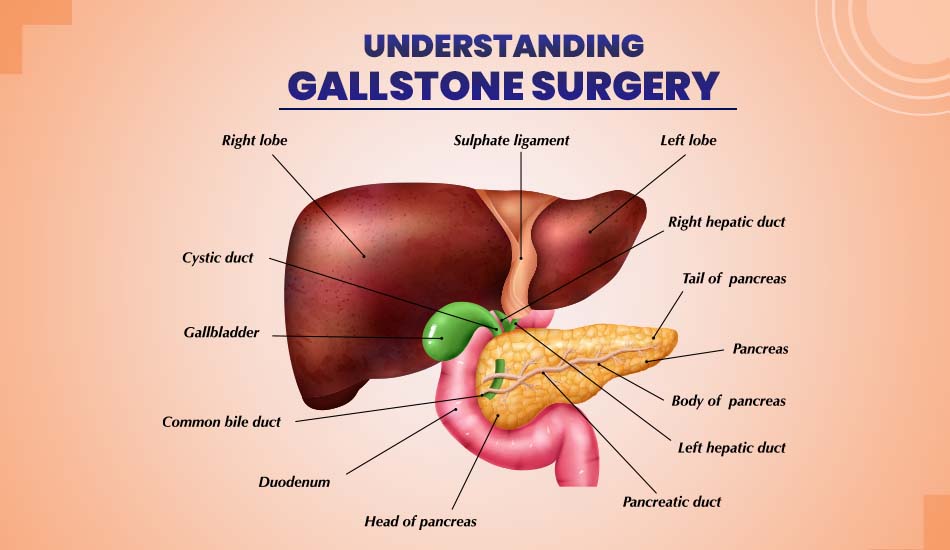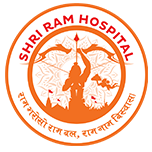
Understanding Gallstone Surgery: A Simple Guide for Patients
Thursday, 23rd May 2024Gallstones can cause significant discomfort and lead to serious health issues if not treated properly. When lifestyle changes and medications aren't enough, surgery may be necessary. This simple guide aims to help patients understand the process of gallstone surgery, from diagnosis to recovery.
What Are Gallstones?
Gallstones are hardened deposits that form in the gallbladder, a small organ located under the liver. The gallbladder stores bile, a digestive fluid produced by the liver. Gallstones can vary in size and may consist of cholesterol, bilirubin, or a mixture of both.
Why Do Gallstones Form?
Gallstones form for several reasons:
- Excess Cholesterol: When the liver produces more cholesterol than bile can dissolve, it can crystallize and form stones.
- Excess Bilirubin: Conditions that cause the liver to produce too much bilirubin, such as liver cirrhosis or certain blood disorders, can lead to gallstone formation.
- Gallbladder Dysfunction: If the gallbladder doesn't empty properly, bile can become concentrated and form stones.
Symptoms of Gallstones
Many people with gallstones experience no symptoms. However, when a gallstone blocks a bile duct, it can cause:
- Sudden and intense pain in the upper right abdomen
- Pain between the shoulder blades or in the right shoulder
- Nausea or vomiting
- Jaundice (yellowing of the skin and eyes) if the bile duct is blocked
- Fever and chills if an infection develops
When is Surgery Needed?
Surgery is typically recommended when gallstones cause severe symptoms or complications, such as:
- Biliary Colic: Severe pain caused by gallstones blocking the bile ducts
- Cholecystitis: Inflammation of the gallbladder
- Pancreatitis: Inflammation of the pancreas due to blocked bile ducts
- Cholangitis: Infection of the bile ducts
Types of Gallstone Surgery
Laparoscopic Cholecystectomy
Laparoscopic cholecystectomy is the most common and least invasive surgery for removing the gallbladder. It involves:
- Making several small incisions in the abdomen
- Inserting a laparoscope (a thin tube with a camera) through one incision to visualize the gallbladder
- Using surgical instruments inserted through the other incisions to remove the gallbladder
Benefits:
- Less pain after surgery
- Shorter hospital stay
- Faster recovery time
- Smaller scars
Open Cholecystectomy
Open cholecystectomy is performed if laparoscopic surgery is not suitable, often due to complications or extensive scarring from previous surgeries. It involves:
- Making a larger incision in the abdomen to access the gallbladder
- Removing the gallbladder through the incision
Benefits:
Drawbacks:
- Longer hospital stay
- Longer recovery time
- More pain after surgery
- Larger scar
Preparing for Gallstone Surgery
Pre-Surgery Evaluation
Before surgery, you will undergo a thorough evaluation, including:
- Physical examination
- Blood tests to check liver function and overall health
- Imaging tests such as ultrasound, CT scan, or MRI to locate and assess the gallstones
Pre-Surgery Instructions
Your surgeon will provide specific instructions, which may include:
- Fasting for a certain period before surgery
- Stopping certain medications or supplements
- Arranging for someone to drive you home after surgery
The Surgical Procedure
During Laparoscopic Cholecystectomy
- Anesthesia: You will be given general anesthesia to ensure you are asleep and pain-free during the procedure.
- Incisions: The surgeon makes several small incisions in your abdomen.
- Laparoscope Insertion: A laparoscope is inserted through one of the incisions to provide a view of the gallbladder.
- Gallbladder Removal: Surgical instruments are used to remove the gallbladder through one of the other incisions.
- Closure: The incisions are closed with stitches or surgical glue.
During Open Cholecystectomy
- Anesthesia: General anesthesia is administered.
- Incision: A single larger incision is made in your abdomen.
- Gallbladder Removal: The surgeon removes the gallbladder through the incision.
- Closure: The incision is closed with stitches.
Recovery After Gallstone Surgery
Immediate Post-Surgery Care
- Monitoring: You will be monitored in the recovery room until the effects of anesthesia wear off.
- Pain Management: Pain medications will be provided to manage discomfort.
At Home
- Rest: Take it easy for the first few days and gradually increase your activity level.
- Wound Care: Keep the surgical site clean and dry, and follow your surgeon’s instructions for wound care.
- Diet: Start with a light diet and gradually return to your normal eating habits as recommended by your doctor.
Follow-Up
- Appointments: Attend all scheduled follow-up appointments to monitor your recovery.
- Symptoms: Contact your doctor if you experience severe pain, fever, jaundice, or signs of infection at the surgical site.
Long-Term Outlook
Most people recover fully from gallstone surgery and experience significant relief from symptoms. The gallbladder is not essential for digestion, and its removal typically does not affect long-term health. However, some dietary adjustments may be necessary to help your digestive system adapt.
Success Stories: Real Patient Experiences
Jessica’s Quick Recovery
Jessica, a 34-year-old teacher, shares her experience: "I had severe gallstone pain that disrupted my daily life. The laparoscopic surgery was quick, and I was back to work in a week. The small scars are barely noticeable, and I feel so much better now."
Tom’s Journey with Open Cholecystectomy
Tom, a 58-year-old construction worker, recounts his story: "Due to previous surgeries, I needed an open cholecystectomy. The recovery took longer, but the care I received was excellent. I'm back to my normal routine and grateful to be pain-free."
Conclusion
Gallstone surgery is a common and effective treatment for those suffering from gallstone-related complications. Understanding the types of surgery, what to expect during the procedure, and how to care for yourself during recovery can help ensure a smooth and successful outcome. If you are experiencing symptoms of gallstones, consult with your healthcare provider to discuss your treatment options and take the first step toward relief and better health.


